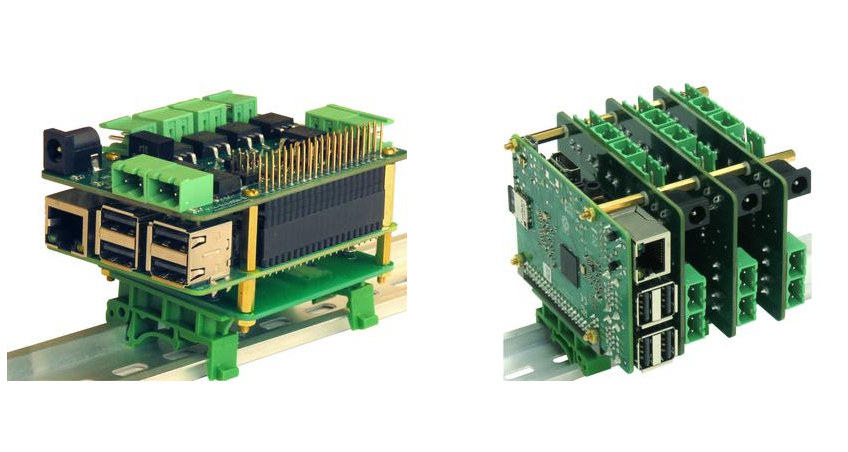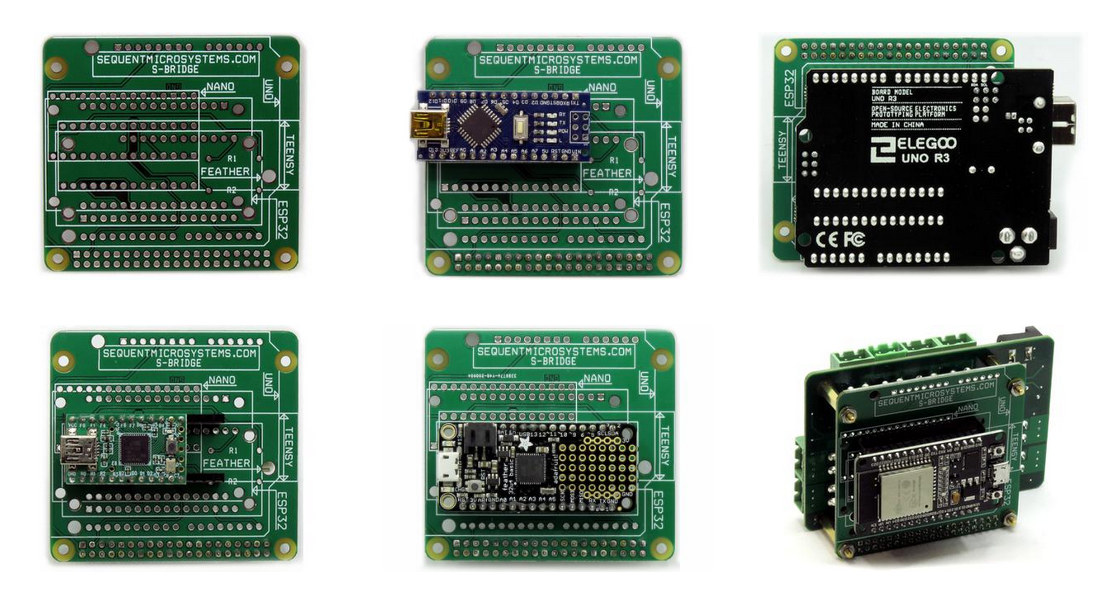Using inexpensive relays to switch AC or DC loads work well in most cases, but those relays will be quickly damaged when faced with high DC voltages, fast switching times, or other endurance requirements for which MOSFET’s are better suited, and that’s why MOSFET power supplies are found in 3D printers.
Sequent Microsystems has made a habit to provide specialized Raspberry Pi HAT with relays or terminals for resistance temperature detectors that are stackable to supports a larger number for I/O or sensors. The company is now back at it with the 8-MOSFET stackable, DIN-rail mountable board that works not only with Raspberry Pi SBC, but also popular Arduino, ESP32, and other maker boards.

8-MOSFET key features and specifications:
- Eight MOSFETs with status LEDs
- 4 optimized for high-current (HC) loads up to 10 A / 24 VDC
- 4 optimized for high-voltage (HV) loads up to 2 A / 240 VDC
- Pluggable connectors
- Host interface – I2C via 40-pin Raspberry Pi header
- DIN rail mountable
- Stackable with up to seven additional 8-MOSFETs & MCU board
The company provides command-line tools & Python drivers to control the board. Check out the docs directory for a user’s guide and the schematics. We can see how it compares to the company’s relay board in the table below.
 We can see the MOSFET supports DC loads with higher voltage and current, and the relay is useless for fast switching loads as it would die within a few minutes, while the MOSFET board can last decades under a similar load. The endurance of relays is also limited to around 100,000 cycles at high current. However, the 8-MOSFET board is not suitable for AC loads and costs a little more.
We can see the MOSFET supports DC loads with higher voltage and current, and the relay is useless for fast switching loads as it would die within a few minutes, while the MOSFET board can last decades under a similar load. The endurance of relays is also limited to around 100,000 cycles at high current. However, the 8-MOSFET board is not suitable for AC loads and costs a little more.
 If an Arm Linux SBC like a Raspberry Pi is overkill for your project, the company’s S-Bridge board allows you to connect Arduino Nano or Arduino Uno, Teensy, AdaFruit Feather, or ESP32 development kits to 8-MOSFET board.
If an Arm Linux SBC like a Raspberry Pi is overkill for your project, the company’s S-Bridge board allows you to connect Arduino Nano or Arduino Uno, Teensy, AdaFruit Feather, or ESP32 development kits to 8-MOSFET board.
Sequent Microsystems launched the project on Crowd Supply with a $1,000 funding target. Rewards start at $30 for the early bid MOSFET-8 board with all necessary mounting hardware, connectors, and two jumpers, while the S-Bridge adapter and DIN-rail mounting kits all cost $10. Shipping is free to the US, and adds $7 to $35 to the rest of the world depending on the select rewards. Delivery is expected to start at the end of February 2021.

Jean-Luc started CNX Software in 2010 as a part-time endeavor, before quitting his job as a software engineering manager, and starting to write daily news, and reviews full time later in 2011.
Support CNX Software! Donate via cryptocurrencies, become a Patron on Patreon, or purchase goods on Amazon or Aliexpress





I would really not play with this board, I have a few concerns with it:
For high voltages, solid state relays would be more suitable and more convenient. These are in fact opto-triacs, which also support AC and very high currents. For low currents, smaller opto-triacs like MOC3061 are nice and cheap (often used to control triacs up to 100mA or so).
The low voltage high current ones should definitely use a faster switching so that the MOSFETs always work in saturation (and the high voltage should as well). Using only a resistor to turn them off will make them heat a lot at a few tens of kHz, and not much is required to improve this (2-4 SMD transistors per channel).